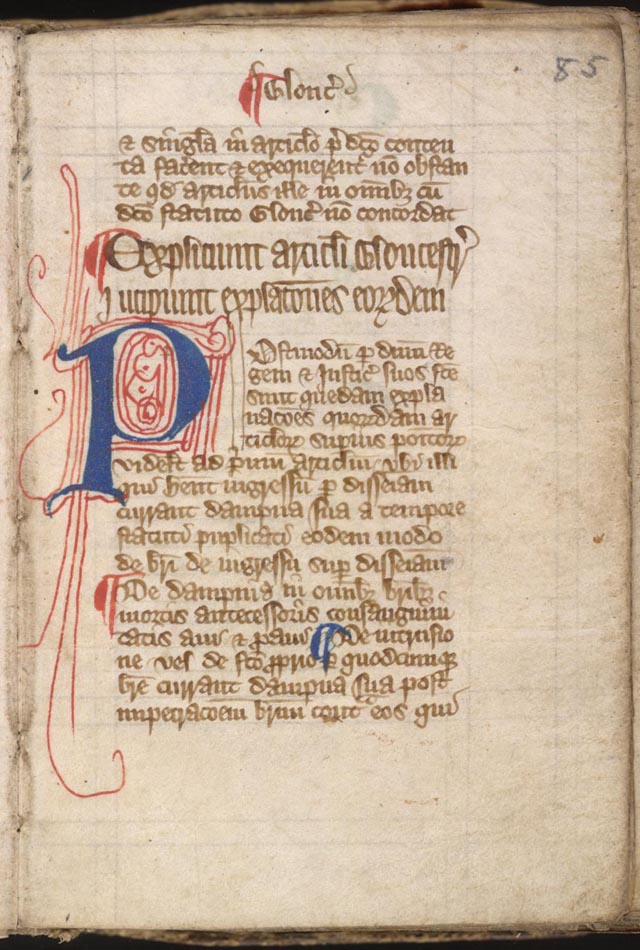The Magna Carta resulted from a groundbreaking agreement that King John of England submitted to in a very different age. And as we approach its 800th anniversary in 2015, Laura Taylor from the Manorial Counsel tells us more about it…

Page 1 of a copy of the Magna Carta. It is currently in the Library of Congress in Washington, D.C.
Whilst relating to history, and more specifically historical events, there are always particular ones that spring mind. This can be influenced by current and topical events or historical anniversaries.
A prime example of this is the approaching 800-year anniversary of the signing of Magna Carta. This will be celebrated on June 15, 2015. Fellow history enthusiasts will know the finer details surrounding Magna Carta, also called Magna Carta Libertatum or The Great Charter of the Liberties of England, and the events preceding its signing at Runnymede.
Let’s take a look at the history surrounding the event…
On the surface it may seem like a group of disgruntled and rebellious Barons who conspired against King John. Magna Carta was authored over many months by the Barons in secret and anticipation in the caves at Reigate, Surrey. Magna Carta was actually rejected by many Barons. History tells us that King John was a volatile and unpredictable King with little compassion or regard for his subjects and his realm. The Barons based their rebellion around John’s oppressive government. Magna Carta was the first instant of a Statute being imposed and enforced on a Monarch. Its intention was to limit King John’s powers and protect the rights of the Barons and English subjects.
King John, not wanting to relinquish any powers, which he deemed were his by divine right, tried to appease the Barons, and open up negotiations. The Barons were never going to accept John’s word as past experience proved he was not a man of his word and was selective regarding previous agreements.
The King tried to delay, whilst waiting for support from Rome and paid mercenaries from other countries. Further negotiations took place from January to June 1215. These resulted in the document named by historians as ‘The Unknown Charter of Liberties’.
The Barons were not going to be suppressed any longer; they had the additional support from Louis the French Prince, and King Alexander II of Scotland. On the June 10, 1215 they marched on the city of London and forced King John to agree to a document known later as the ‘Articles of the Barons’. Five days later the seal of King John was duly attached to the document, and in return the Barons reaffirmed their fealty to the King. Thus Magna Carta was set in law.
Twenty-five Barons stood to enforce Magna Carta, and together had the power to overrule the King if he defied any of the provisions of the Charter.
Once the Barons had left London John renounced the Charter immediately. What followed next is known as the “First Barons’ War” The Barons wished to replace King with Prince Louis of France. This was an unpopular choice with many as England and France had been at war for the last 30 years.
Magna Carta may appeared to have failed initially
However, upon the death of King John in 1216 and throughout the next 80 years, Magna Carta really came into provenance, albeit with some clauses removed or amended. In 1225 King Henry III (King John’s son) was called upon to confirm the Charters, Henry reissued a shorter version of the Charter. 72 years later King Edward I then reissued the 1225 Charter. It is this version that remains in Statute today; obviously the majority of clauses have been repealed.
Forthcoming celebrations
There are many events planned worldwide to mark the 800-year anniversary, and currently there are copies of Magna Carta on tour in America, one of which is owned by Lincoln Cathedral, normally on display at Lincoln Castle. We visited Lincoln Castle recently and spoke with one of the guides who explained to us that, whilst Lincolnshire’s copy of Magna Carta was currently on loan to the US, they were undergoing the task of having a new vault and display commissioned to house their copy upon its return.
Many readers will be familiar with the connection between Magna Carta and the American Bill of Rights. A prime example of this is when Maryland in 1638 sought to recognize Magna Carta as law in the province. This was not granted by the King.
One can’t help but wonder what would have been if those “disgruntled and rebellious Barons” had not rallied together and made a stand against their king? Would Magna Carta have ever happened in later years, perhaps under a different guise? One could suggest that it was all down to King John and the fact that he was despised by those he suppressed, so he bought it on himself. History documents quite clearly the popularity of English Monarchs, their shortcomings and legacies. There does not appear to be another monarch who was held in such disdain as John, or one whose volatile and unpredictable rule left such a legacy. So for that, should we be grateful?
If you are a descendant of the Barons who supported Magna Carta then you may be interested in the following publication: “Magna Carta Barons” 1915 – Baronial Order of Runnemede, by Charles H. Browning.
To find out more about acquiring a Barony title visit our website > www.manorialcounselltd.co.uk or contact [email protected]
Quote History is Now 20 to receive your exclusive discount on any title purchase!
